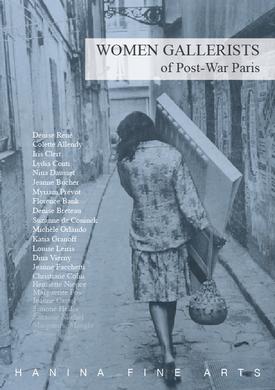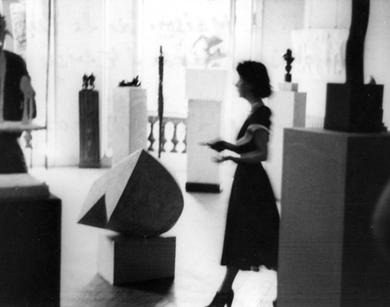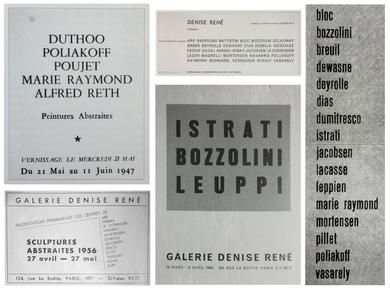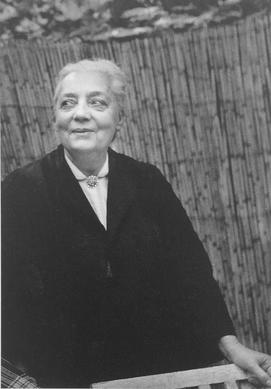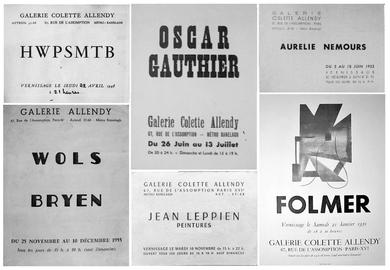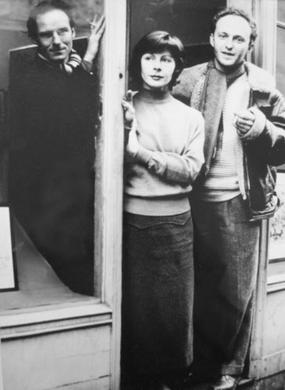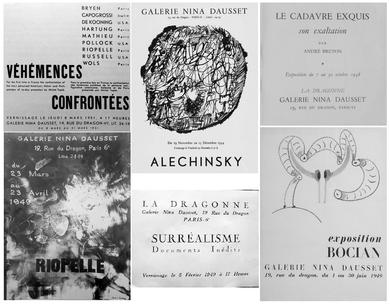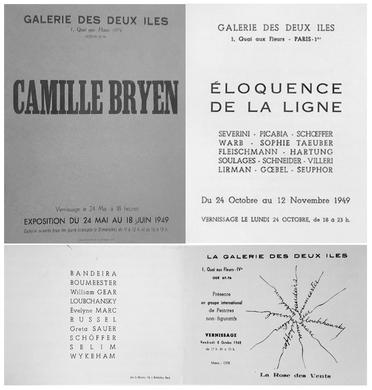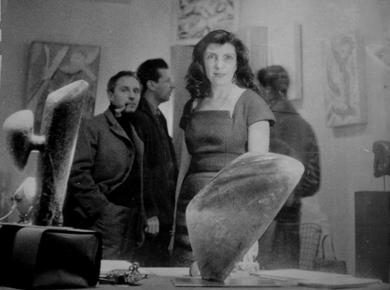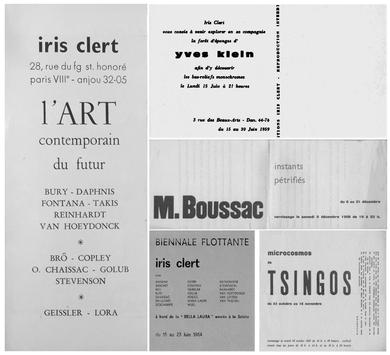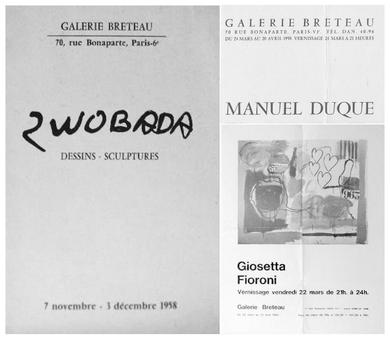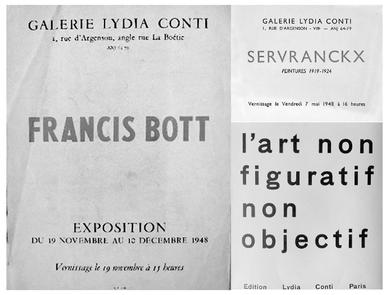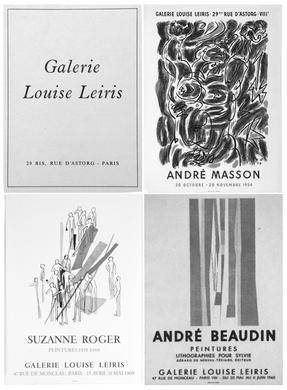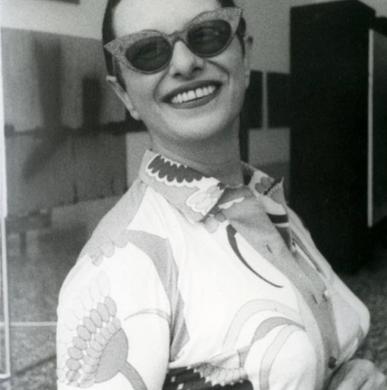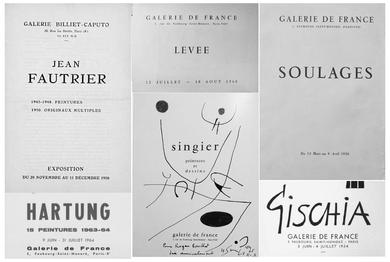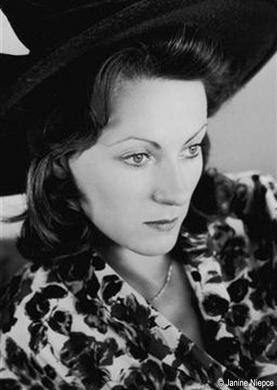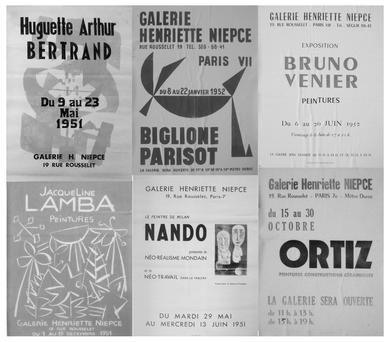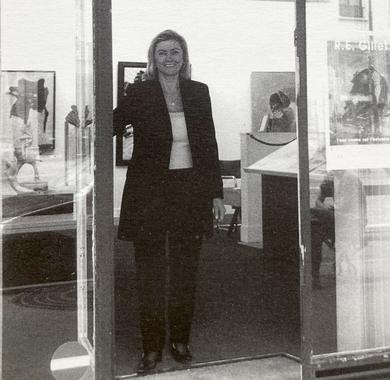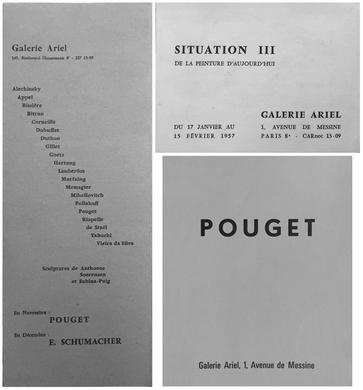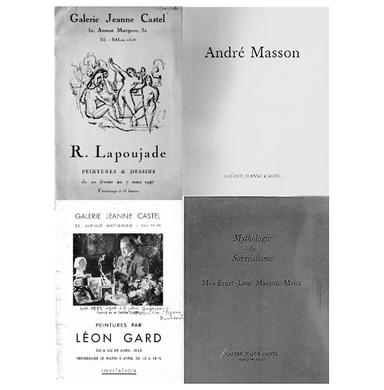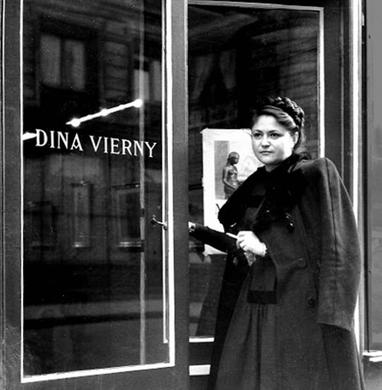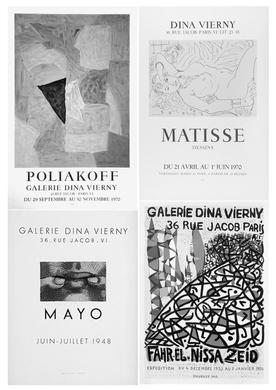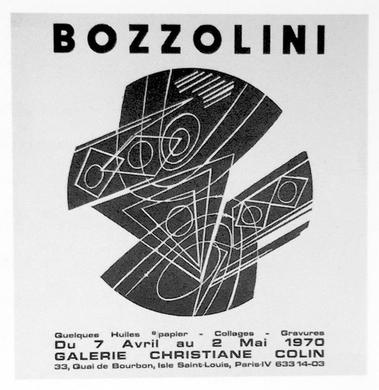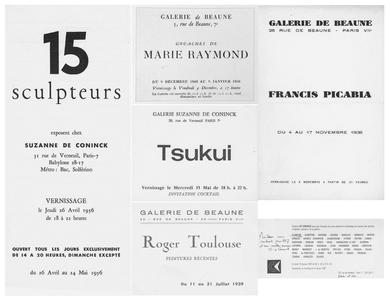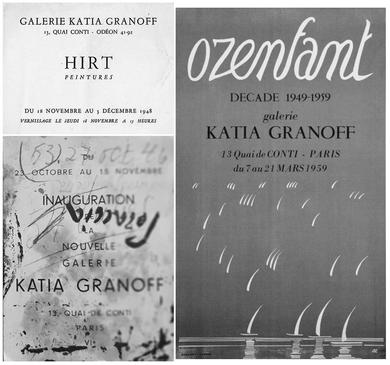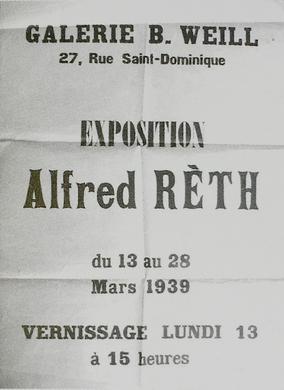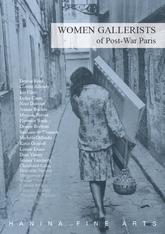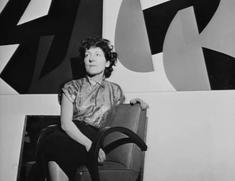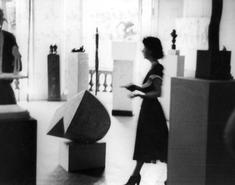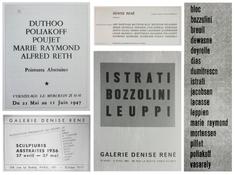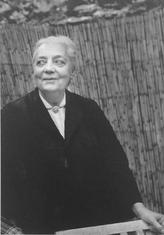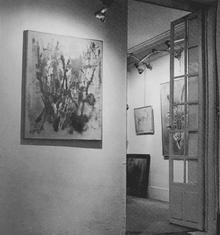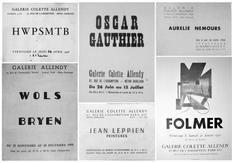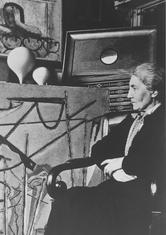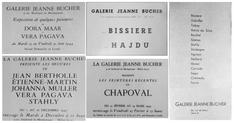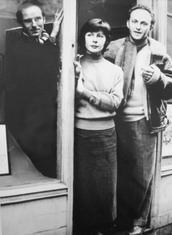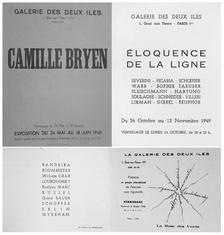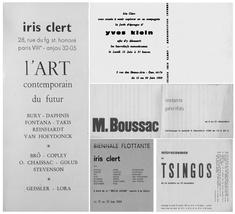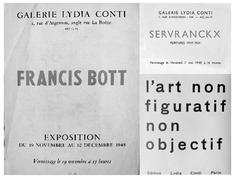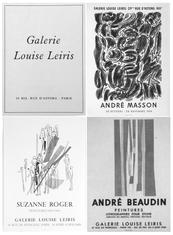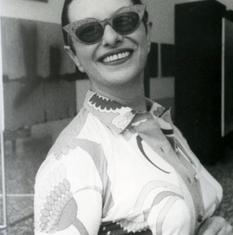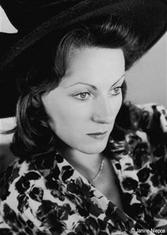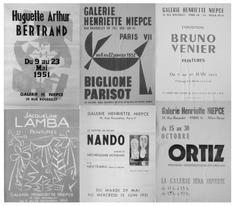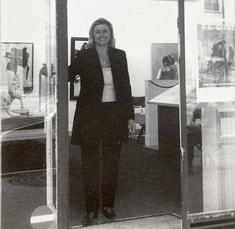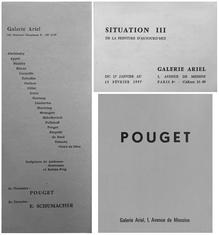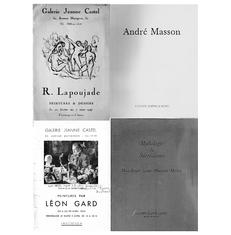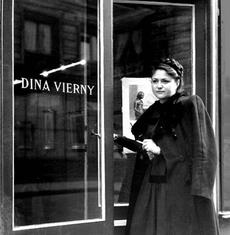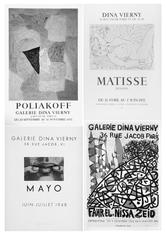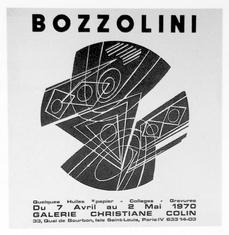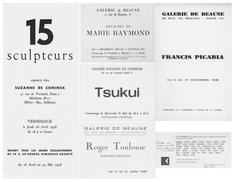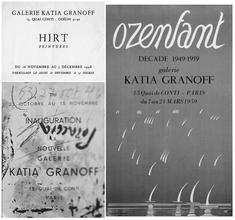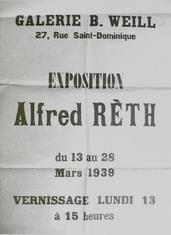This exhibition celebrates the remarkable influence of women gallerists in post-war Paris. At a time when it was still confoundingly hard for women artists to get established, in 1951 one in three galleries in Paris were actually run by women. Often referred to as the “Papesses de l’art abstrait” they proved fundamental in the development of post-war art.
Many of the groundbreaking exhibitions of the period were organised by women gallerists, such as Colette Allendy’s “HWPSMTB” with Hartung, Wols, Mathieu and Bryen held in her house in 1948 launching the Art Informel movement; similarly Florence Bank’s “Black & White” with Fautrier, Mathieu, Wols and Germain at her Galerie des Deux Iles in 1949; and Nina Dausset’s “Véhémences Confrontées” with Bryen, De Kooning, Hartung, Mathieu, Pollock, in 1951.
The matriarch of Parisian galleries, Jeanne Bucher who’d first opened in 1925, championed many artists including Vieira da Silva, Nicolas de Stael, Youla Chapoval and André Lanskoy, and although she died in 1946, her legacy was ever present through her nephew’s stewardship of the gallery.
One of the most enduring of the post-war galleries was Denise René’s, initially showing in the family millinery workshop in 1944, it became associated with geometric abstraction, and artists such as Vasarely, Poliakoff, Deyrolle and Gilioli. She would go on to open further galleries in Dusseldorf and New York.
Iris Clert meanwhile treated her gallery more as a performance laboratory for artists such as Klein, Tinguely, and Fontana. Her legendary “vernissages” were recorded in her magazine “Iris-Time”, mixing artworld gossip with avant-garde polemics.
Other influential women were perhaps less visible as partners rather than eponymous galleries, most notably Myriam Prévot of Galerie Billiet (later Galerie de France); Denise Breteau; Jeanne Facchetti; and Michèle Orlando of Galerie Ariel.
But being a “gallerist” still wasn’t immune to traditional social pressures, as evident with the likes of Lydia Conti who opened a gallery in 1947 and showed Soulages and Hartung, before family obligations forced her to close after two years. However she did remain an influential curator.
This exhibition at HFA revisits several of these inspirational gallerists, presenting artworks exhibited by them, along with archive material evoking the spirit of this wonderful era, and honouring their contributions to the history of modern art.
A PDF of the illustrated biographies of the featured women gallerists, as well as an essay on the exhibition, is available to download below:

